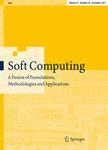版权所有:内蒙古大学图书馆 技术提供:维普资讯• 智图
内蒙古自治区呼和浩特市赛罕区大学西街235号 邮编: 010021

作者机构:Univ Granada Dept Comp Sci & Artificial Intelligence Granada Spain Univ Autonoma Chiriqui UNACHI Dept Comp Sci David Panama De Montfort Univ Inst Artificial Intelligence Leicester Leics England
出 版 物:《SOFT COMPUTING》 (Soft Comput.)
年 卷 期:2019年第23卷第20期
页 面:10105-10117页
核心收录:
学科分类:08[工学] 0812[工学-计算机科学与技术(可授工学、理学学位)]
基 金:PhD scholarship subprogram SENACYT-IFARHU (Secretaria Nacional de Ciencia, Tecnologia e Innovacion y el Instituto para la Formacion y Aprovechamiento de Recursos Humanos), Panama, Republic of Panama [CN2070-2013-052] scholarship program COOPEN-Erasmus Mundus external cooperation windows: Polytechnic University of Valencia, Spain Autonomous University of Chiriqui, David, Panama UNACHI (Universidad Autonoma de Chiriqui, David, Panama) FEDER funds [TIN2016-75850-R] H2020-MSCA-IF Funds Marie Curie Actions (MSCA) Funding Source: Marie Curie Actions (MSCA)
主 题:Magnetic resonance images segmentation Tumor tissue detection Oncologic Fuzzy C-means clustering algorithm Cluster compelling information Region of interest extraction Optimization fuzzy compactness and separation Genetic algorithm
摘 要:The early and accurate detection of brain tumors is key to improve the quality of life and the survival of cancer patients. Magnetic resonance imaging (MRI) is a widely used imaging technique to assess these tumors, but the large amount of data produced by MRI prevents manual segmentation in a reasonable time, limiting the use of precise quantitative measurements in the clinical practice. Consequently, automatic and reliable segmentation methods are required. However, the large spatial and structural variability among brain tumors make automatic segmentation a challenging problem. In this contribution, we present a new model of segmentation of brain magnetic resonance images. In order to obtain the region of interest, we propose a hybrid approach that carries out both fuzzy c-mean algorithm and multiobjective optimization taking into account both compactness and separation in the clusters with the purpose of improving the cluster center detection and speed up the convergence time. This new segmentation approach is a key component of the proposed magnetic resonance image-based classification system for brain tumors. Experimental results are presented to demonstrate the effectiveness and efficiency of the proposed approach using the DICOM MRI database.